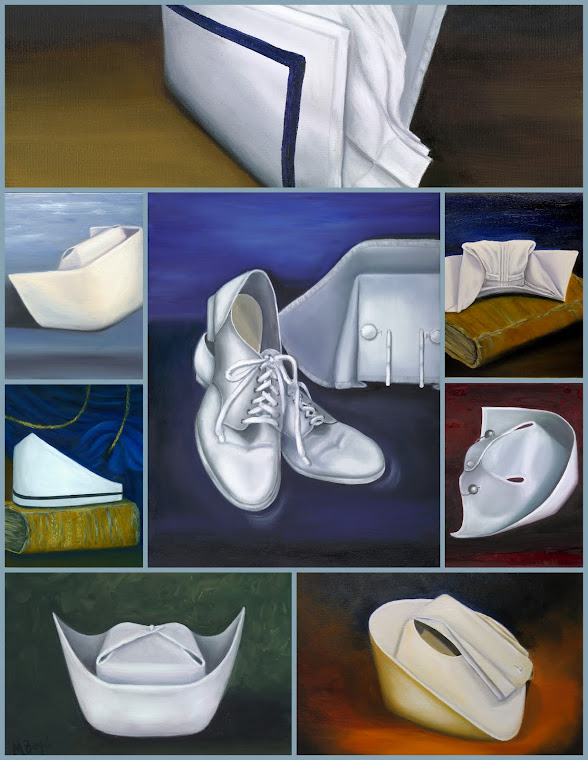Several of my colleagues have said, "Why focus on nurses' caps?" "Caps are relics. Why even bring them up?" "With all the challenges facing the nursing profession and facing each nurse in the trenches every day how can you justify even bringing up the cap? It's a dead issue. Nurses have far more important things to spend their time reading about." "Caps bring back parts of nursing that no one wants to revisit such as "training" instead of educating, servitude, the hand maiden role to physicians, lack of professional status....."
In response I say, "I hear you and on many levels I agree." Why do I spend my time researching, painting, blogging, and twitting about the now defunct nurse's cap? Oh, for a multitude of reasons. Some of which I will share with you now.
I was brought into the the profession in a time and by a program that continued the long tradition of the cap. We received our plain white cap after our first semester in a capping ceremony. As we progressed through the curriculum a blue velvet ribbon was added on the back left tail at the beginning of each year. Those three blue ribbons worn as a senior were such a status symbol! Graduation included not only the general collegiate graduation but the nursing pinning and capping ceremony. We received our school pin and our graduate cap, the blue vertical bands removed and a horizontal black velvet band placed one-inch from the bottom of the cap. Oh my, I still remember how I felt knowing that that piece of white starched and decorated fabric sitting on the back of my head broadcast to all who saw it that I was a professional nurse. I can't help it. I have many very positive emotions associated with my cap.
Another reason I have taken up the cap cause is that I have always rooted for the underdog, always advocated for issues that may not be popular but have merit, and I have always thought you shouldn't throw the baby out with the bath water. Love it or hate it, the cap is a part of our nursing heritage and it shouldn't be swept under the rug but acknowledged, researched, and documented as a part of our shared professional history.
This is enough for now. I will share more in the next post.





